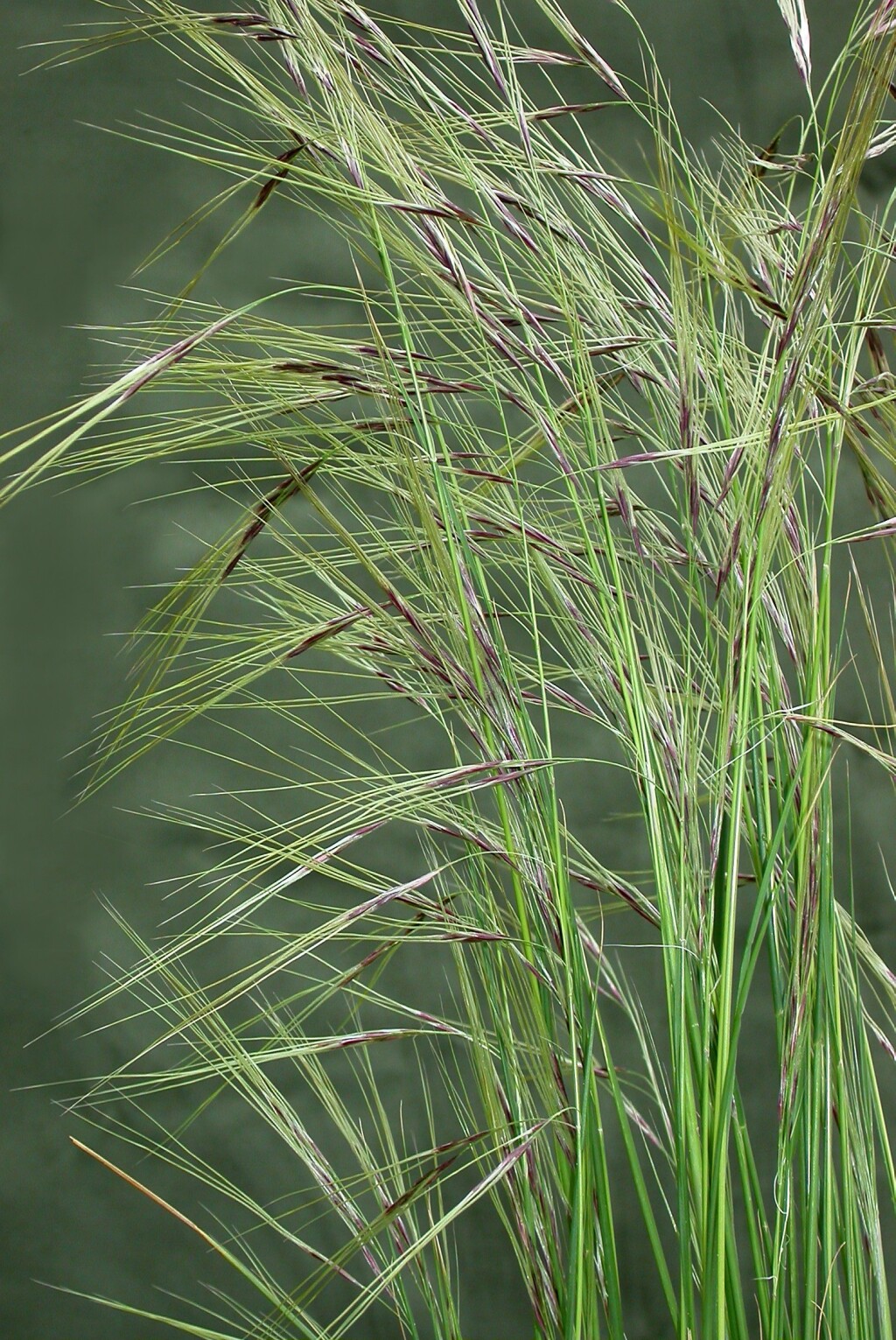Nassella
Tufted perennials. Leaves basal; blade flat to involute; ligule membranous, sometimes ciliate. Normal inflorescence a panicle, cleistogenes sometimes also produced in lower leaf sheaths; spikelets with 1 bisexual flower. Glumes paired, persistent, longer than floret (excluding awn); floret articulate above glumes; callus hairy; lemma firm, often tuberculate, the margins substantially overlapping, 3-nerved, the awn often subtended by a corona of short spines or hard bristles; awn persistent (in Australia), straight to geniculate, sometimes eccentric, longer than lemma; palea membranous 0- or 1-nerved, much shorter than lemma and fully enclosed by it; stamens 2.
A genus of over 100 species, mostly South American; 7 troublesome species introduced in Australia.
Cleistogenes, when produced, are crowded in rows in basal leaf-sheaths. Glumes and awns may be present and reduced or absent. The 'florets' are usually shorter, plumper and smoother than normal florets of the inflorescence.
Walsh, N.G. (1994). Poaceae. In: Walsh, N.G.; Entwisle, T.J., Flora of Victoria Vol. 2, Ferns and Allied Plants, Conifers and Monocotyledons, pp. 356–627. Inkata Press, Melbourne.
 Spinning
Spinning


